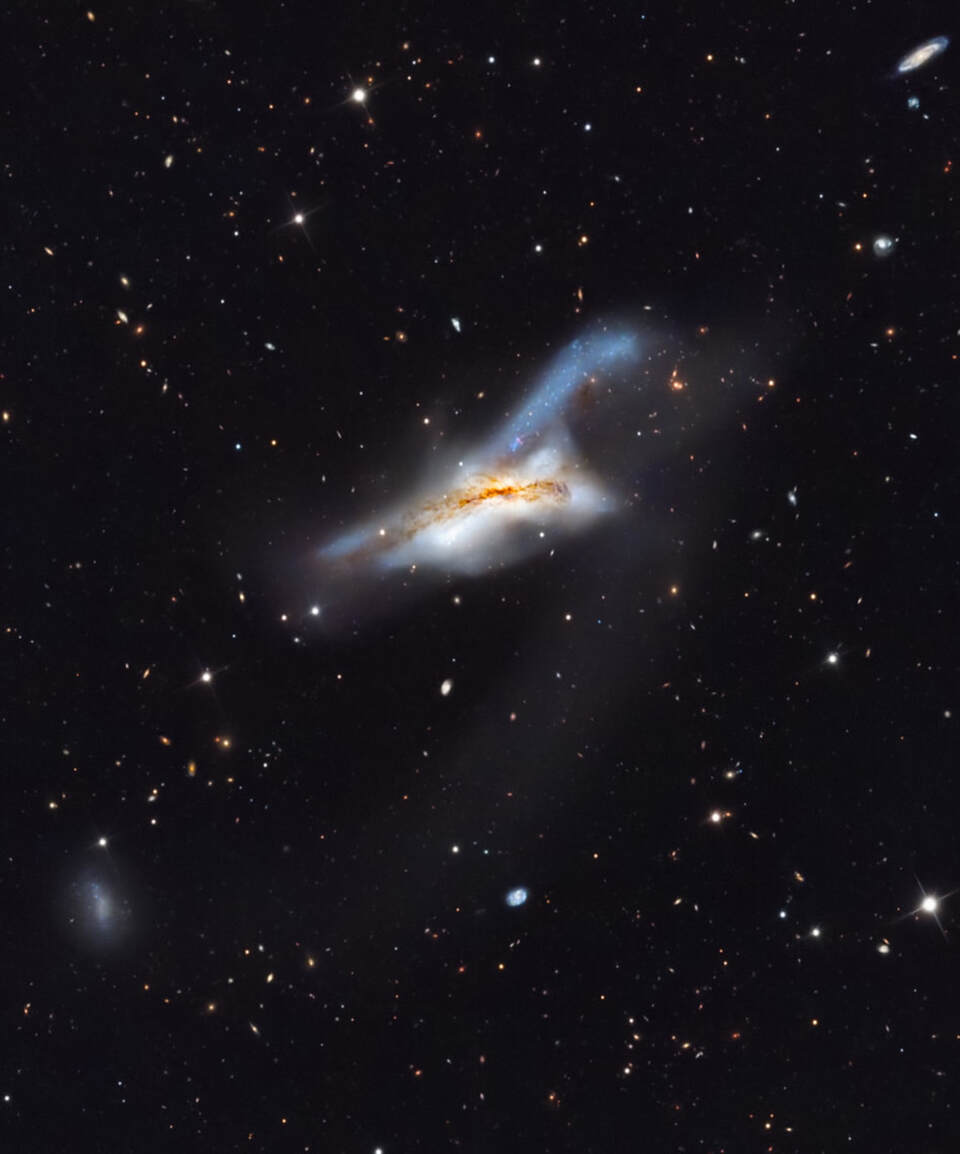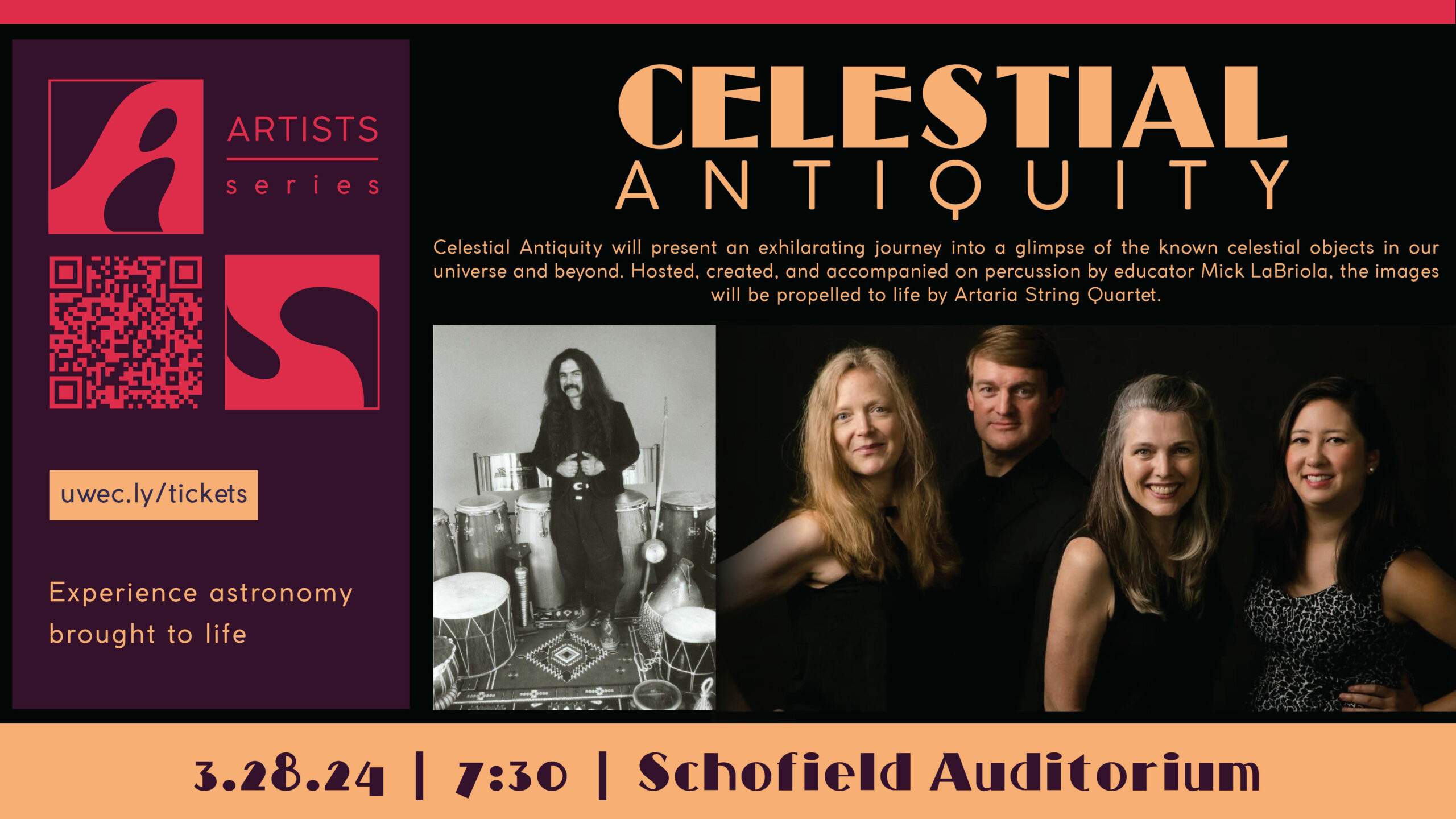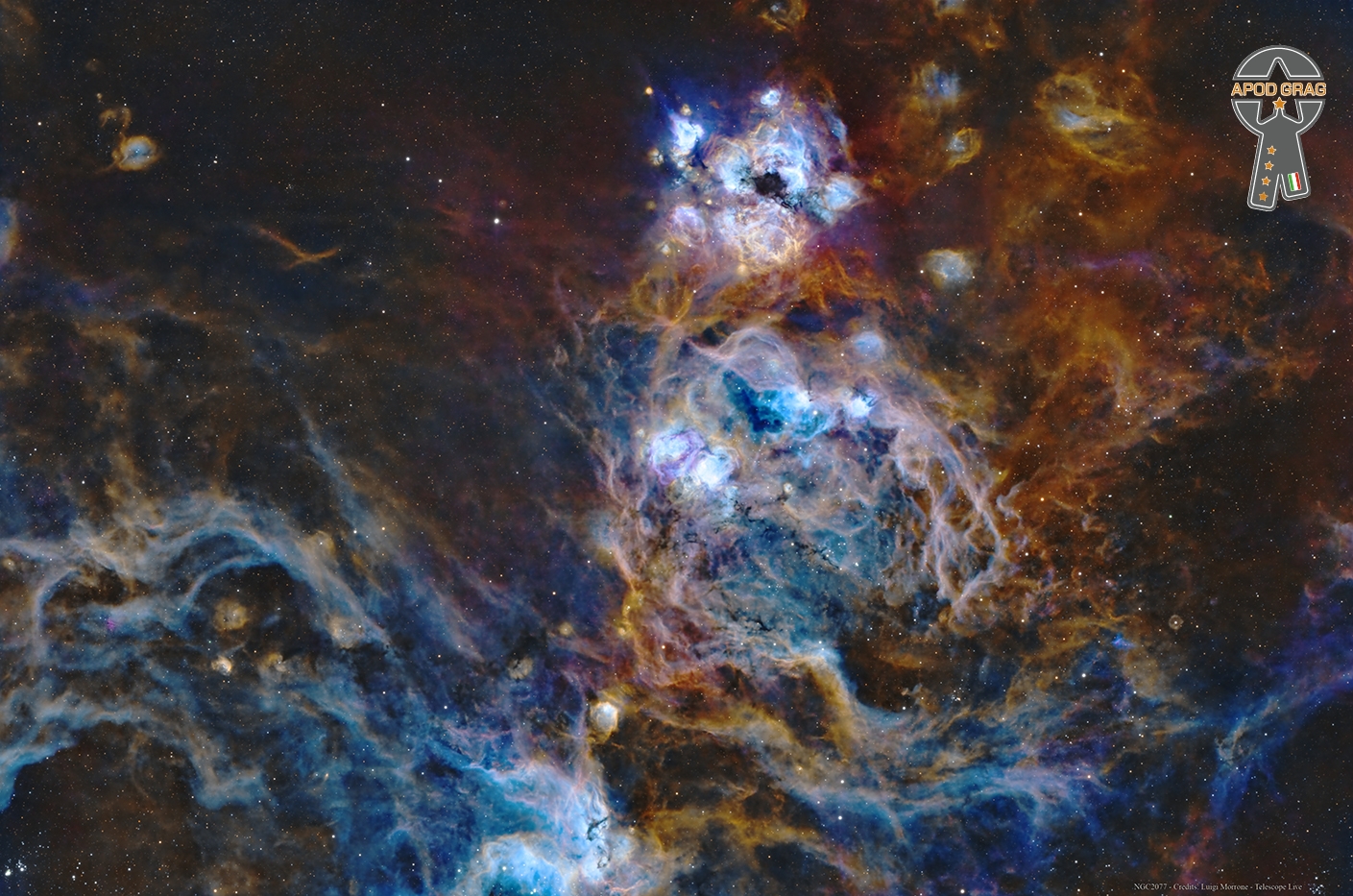Blog
Abell 31 (also known as Sh2-290) is a planetary nebula of nearly ten light-years wide, located about 2,000 light-years away from Earth in the constellation of Cancer. Although it is one of the largest planetary nebulae of the sky, Abell 31 is not very bright.
Despite their name, planetary nebulae have nothing to do with planets. The name of planetary nebulae arose in the 18th century because of the visual similarity between some round planetary nebulae and the planets Uranus and Neptune when viewed through small optical telescopes.

Tracy Chapman (born March 30, 1964) is an American singer-songwriter, widely known for her hit singles “Fast Car” (1988) and “Give Me One Reason” (1995).
She was signed to Elektra Records by Bob Krasnow in 1987. The following year she released her debut album, Tracy Chapman, which became a commercial success, boosted by her appearance at the Nelson Mandela 70th Birthday Tribute concert, and was certified 6× Platinum by the Recording Industry Association of America. The album received six Grammy Award nominations, including one for Album of the Year, three of which she won: Best New Artist, Best Female Pop Vocal Performance for her single “Fast Car”, and Best Contemporary Folk Album. In 1989 she released her second album, Crossroads, which earned her an additional Grammy Award nomination for Best Contemporary Folk Album. Her third album, Matters of the Heart, followed in 1992.
Her fourth album, New Beginning, was released in 1995 and became another worldwide success. It was certified 5× platinum by the RIAA and yielded the hit single “Give Me One Reason”, which earned her the Grammy Award for Best Rock Song. Five years would pass before the release of her fifth album, Telling Stories (2000). Let It Rain and Where You Live followed in 2002 and 2005, respectively. Her most recent studio album, Our Bright Future, was released in 2008. The remastered compilation album Greatest Hits, which she curated, was released in 2015.
In 2023, Chapman became the first Black person to score a country number one with a solo composition, and to win the Country Music Association Award for Song of the Year, when Luke Combs covered her song “Fast Car”.
more...Norah Jones (born Geethali Norah Jones Shankar; March 30, 1979) is an American singer-songwriter and pianist. She has won several awards for her music and, as of 2023, had sold more than 50 million records worldwide. Billboard named her the top jazz artist of the 2000s decade. She has won nine Grammy Awards and was ranked 60th on Billboard magazine’s artists of the 2000s decade chart.
In 2002, Jones launched her solo music career with the release of Come Away with Me, which was a fusion of jazz with country, blues, folk and pop. It was certified diamond, selling over 27 million copies. The record earned Jones five Grammy Awards, including the Album of the Year, Record of the Year, and Best New Artist, making her the first person of South Asian descent to win that many Grammy awards. Her subsequent studio albums Feels Like Home (2004), Not Too Late (2007), and The Fall (2009), all gained platinum status, selling over a million copies each. They were also generally well received by critics.Jones made her feature film debut as an actress in My Blueberry Nights, which was released in 2007 and was directed by Wong Kar-Wai.
Jones is the daughter of Indian sitarist and composer Ravi Shankar, and is the half-sister of fellow Indian musicians Anoushka Shankar and Shubhendra Shankar.
more...Eric Patrick Clapton CBE (born 30 March 1945) is an English rock and blues guitarist, singer, and songwriter. He is regarded as one of the most successful and influential guitarists in rock music. He ranked second in Rolling Stone‘s list of the “100 Greatest Guitarists of All Time“ and fourth in Gibson‘s “Top 50 Guitarists of All Time”. In 2023, Rolling Stone named Clapton the 35th best guitarist of all time.He was also named number five in Time magazine’s list of “The 10 Best Electric Guitar Players” in 2009.
After playing in a number of different local bands, Clapton joined the Yardbirds from 1963 to 1965, and John Mayall & the Bluesbreakers from 1965 to 1966. After leaving Mayall, he formed the power trio Creamwith drummer Ginger Baker and bassist/vocalist Jack Bruce, in which Clapton played sustained blues improvisations and “arty, blues-based psychedelic pop“. After four successful albums, Cream broke up in November 1968. Clapton then formed the blues rock band Blind Faith with Baker, Steve Winwood, and Ric Grech, recording one album and performing on one tour before they broke up. Clapton then toured with Delaney & Bonnie and recorded his first solo album in 1970, before forming Derek and the Dominos with Bobby Whitlock, Carl Radle and Jim Gordon. Like Blind Faith, the band only lasted one album, Layla and Other Assorted Love Songs, which includes “Layla“, one of Clapton’s signature songs.
Clapton continued to record a number of successful solo albums and songs over the next several decades, including a 1974 cover of Bob Marley‘s “I Shot the Sheriff” (which helped reggae reach a mass market),the country-infused Slowhand album (1977) and the pop rock of 1986’s August. Following the death of his son Conor in 1991, Clapton’s grief was expressed in the song “Tears in Heaven“, which appeared on his Unplugged album. In 1996 he had another top-40 hit with the R&B crossover “Change the World“. In 1998, he released the Grammy award-winning “My Father’s Eyes“. Since 1999, he has recorded a number of traditional blues and blues rock albums and hosted the periodic Crossroads Guitar Festival. His most recent studio album is Happy Xmas (2018).
Clapton has received 18 Grammy Awards as well as the Brit Award for Outstanding Contribution to Music. In 2004, he was awarded a CBE for services to music. He has received four Ivor Novello Awardsfrom the British Academy of Songwriters, Composers and Authors, including the Lifetime Achievement Award. He is the only three-time inductee to the Rock and Roll Hall of Fame: once as a solo artist, and separately as a member of the Yardbirds and of Cream. In his solo career, he has sold more than 280 million records worldwide, making him one of the best-selling musicians of all time. In 1998, Clapton, a recovering alcoholic and drug addict, founded the Crossroads Centre on Antigua, a medical facility for those recovering from substance abuse.
more...Accompanying Friday March 29th 6pm shabbat service with Inbal Sharett-Singer, Jayson Rodsvsky, Jeff Bailey, Pete Whitman and mick laBriola.
more...NGC 520 is a pair of colliding spiral galaxies about 105 million light-years away in the constellationPisces. They were discovered by astronomer William Herschel on 13 December 1784.
Halton Arp called this the second-brightest very disturbed galaxy in the sky, and it is as bright in the infrared and radio bands as the Antennae Galaxies. Simulations indicate this object consists of two galactic disks that began interacting about 300 million years ago. The system is still in an early stage of its merger, showing two separate velocity systems in the spectra, and two small tails. Two galactic nuclei have been detected, and one is an H II nucleus.

Michael Leonard Brecker (March 29, 1949 – January 13, 2007) was an American jazz saxophonist and composer. He was awarded 15 Grammy Awards as a performer and composer, received an honorary doctorate from Berklee College of Music in 2004, and was inducted into the DownBeat Jazz Hall of Fame in 2007.
Brecker was in great demand as a soloist, sideman and session musician. He performed with bands whose styles ranged from mainstream jazz to mainstream rock. Altogether, he appeared on nearly 900 albums, either as a band member or a guest soloist. He put his stamp on numerous pop and rock recordings as a soloist, including notable work with James Taylor and Paul Simon. Other sessions included albums with Steely Dan, Lou Reed, Donald Fagen, Dire Straits, Joni Mitchell, Eric Clapton, Mark Knopfler, Billy Joel, John Lennon, Aerosmith, Dan Fogelberg, Kenny Loggins, Frank Sinatra, Frank Zappa, Bruce Springsteen, Roger Daltrey, Parliament-Funkadelic, Cameo, Yoko Ono, Todd Rundgren, Chaka Khan, Orleans, Blue Öyster Cult, The Manhattan Transfer, Average White Band, Players Association, Everything but the Girl, Patti Austin, Art Garfunkel, Carly Simon, The Brothers Johnson, Karen Carpenter, and T-Square.
Brecker also recorded (or performed) with many leading jazz musicians of his era, including Herbie Hancock, Chick Corea, Hal Galper, Chet Baker, Jan Akkerman, George Benson, Quincy Jones, Charles Mingus, Jaco Pastorius, McCoy Tyner, Pat Metheny, Elvin Jones, Claus Ogerman, Billy Cobham, Horace Silver, Mike Stern, Mike Mainieri, Max Roach, Steps Ahead, Dave Holland, Joey Calderazzo, Kenny Kirkland, Bob James, Grant Green, Don Cherry, Hubert Laws, Don Alias, Larry Goldings, Bob Mintzer, Gary Burton, Yusef Lateef, Steve Gadd, Richard Tee, Dave Brubeck, Charlie Haden, John Abercrombie, Vince Mendoza, Roy Hargrove, and Spyro Gyra. While performing at the Mount Fuji Jazz Festival in 2004, Brecker experienced a sharp pain in his back. Shortly thereafter in 2005, he was diagnosed with the blood disorder myelodysplastic syndrome (MDS). Despite a widely publicized worldwide search, Brecker was unable to find a matching stem cell donor. In late 2005, he was the recipient of an experimental partial matching stem cell transplant. By late 2006, he appeared to be recovering, but the treatment proved not to be a cure. He made his final public performance on June 23, 2006, playing with Hancock at Carnegie Hall. Brecker died from complications of leukemia in a Manhattan hospital. His funeral was held on January 15, 2007, in Hastings-on-Hudson, New York.
more...
Evangelos Odysseas Papathanassiou (29 March 1943 – 17 May 2022), known professionally as Vangelis, was a Greek keyboardist, composer, and producer of electronic, progressive, ambient, and classical orchestral music. He was best known for his Academy Award-winning score to Chariots of Fire (1981), as well as for composing scores to the films Blade Runner (1982), Missing (1982), Antarctica (1983), The Bounty (1984), 1492: Conquest of Paradise(1992), and Alexander (2004), and for the use of his music in the 1980 PBS documentary series Cosmos: A Personal Voyage by Carl Sagan.
Born in Agria and raised in Athens, Vangelis began his career in the 1960s as a member of the rock bands The Forminx and Aphrodite’s Child; the latter’s album 666 (1972) is now recognised as a progressive–psychedelic rock classic. Vangelis first settled in Paris, and gained initial recognition for his scores to the Frédéric Rossif animal documentaries L’Apocalypse des Animaux, La Fête sauvage, and Opéra sauvage. He also released his first solo albums during this time, and performed as a solo artist. In 1975, Vangelis relocated to London where he built his home recording facility named Nemo Studios and released a series of successful and influential albums for RCA Records, including: Heaven and Hell (1975), Albedo 0.39 (1976), Spiral (1977), and China (1979). From 1979 to 1986, Vangelis performed in a duo with Yesvocalist Jon Anderson, releasing several albums as Jon and Vangelis. He also collaborated with Irene Papas on two albums of Greek traditional and religious songs.
Vangelis reached his commercial peak in the 1980s and 1990s. His score for Chariots of Fire (1981) won him an Academy Award for Best Original Score and the film’s main theme, “Chariots of Fire – Titles” went to number one on the U.S. Billboard Hot 100 chart, while his score for 1492: Conquest of Paradise (1992) was nominated for a Golden Globe Award for Best Original Score and the film’s soundtrack and main theme topped the European charts selling millions of copies. His compilation albums Themes (1989), Portraits (So Long Ago, So Clear) (1996), and studio album Voices (1995) also sold well at the time. Vangelis composed the official anthem of the 2002 FIFA World Cup held in Korea and Japan. In his last twenty years, Vangelis collaborated with NASA and ESA on music projects Mythodea (1993), Rosetta(2016), and Juno to Jupiter (2021), his 23rd and final studio album.
Having had a career in music spanning over 50 years and having composed and performed more than 50 albums, Vangelis is one of the most important figures in the history of electronic music, and modern film music. He used many electronic instruments in a fashion of a “one-man quasi-classical orchestra” composing and performing on the first take.
more...Astrud Gilberto (Portuguese: [asˈtɾud ʒiwˈbɛʁtu]; born Astrud Evangelina Weinert; March 29, 1940 – June 5, 2023) was a Brazilian samba and bossa nova singer and songwriter. She gained international attention in the mid-1960s following her recording of the song “The Girl from Ipanema“.
Astrud Gilberto was born Astrud Evangelina Weinert, the daughter of a Brazilian mother and a German father, in Salvador in the Brazilian state of Bahia, on March 29, 1940. She was raised in Rio de Janeiro. Her father was a language professor, and she became fluent in several languages.
She married João Gilberto in 1959. His affair with Miúcha, a Brazilian singer, caused the couple’s separation. According to the Associated Press, their marriage ended in divorce in 1964; but a 2019 Facebook post by their son, João Marcelo Gilberto, said they had “merely separated” and never divorced.
more...The Soleá is synonymous with the Soleares, known as the “Mother of Flamenco”. Flamenco guitarists usually begin their study with the Soleá since it has a relatively slow BPM (usually 50-110BPM). As a result, students have ample time to feel comfortable with the compás accents. Harmonic tension between the E major and F major chords is prevalent in the Soleá form, causing both harmonic and tension and resolve throughout a performance. A Soleá may include the escobilla section, where the beat shifts to a feeling of three.
more...This event was cancelled due to mismanagement at UWEC. Music and Astronomy departments were not notified.

NGC 2077 is a Nebula in the Dorado constellation. NGC 2077 is situated south of the celestial equator and, as such, it is more easily visible from the southern hemisphere.

Gary Willis (born 28 March 1957) is an American bassist and composer known foremost as the co-founder (with Scott Henderson) of the jazz fusionband Tribal Tech. Aside from his work in Tribal Tech, Willis has worked with numerous other jazz musicians including Wayne Shorter, Dennis Chambers, and Allan Holdsworth. “Slaughterhouse 3”, released in 2006, continued his collaboration with drummer Kirk Covington as well as saxophonist Llibert Fortuny to form a modern jazz/funk/groove power-trio. Willis’s latest solo CD Larger Than Life was released on the Abstractlogix label in 2015.
In addition to “Larger Than Life”, Willis’s solo career includes Retro from 2013, Actual Fiction from 2007, No Sweat from 1996 and Bent in 1998. Willis is also the author of four books for bass guitar, “Fingerboard Harmony for Bass”, “The Gary Willis Collection”, “Ultimate Ear Training for Guitar and Bass” and “101 Bass Tips” all published by Hal Leonard.
more...Vicenç Montoliu i Massana, better known as Tete Montoliu (28 March 1933 – 24 August 1997) was a Spanish jazz pianist from Catalonia, Spain. Born blind, he learnt braille music at age seven. His styles varied from hard bop, through afro-Cuban, world fusion, to post bop. He recorded with Lionel Hampton in 1956 and played with saxophonist Roland Kirk in 1963. He also worked with leading American jazz musicians who toured in, or relocated to Europe including Kenny Dorham, Dexter Gordon, Ben Webster, Lucky Thompson, and Anthony Braxton. Tete Montoliu recorded two albums in the US, and recorded for Enja, SteepleChase Records, and Soul Note in Europe.
Montoliu was born blind, in the Eixample district of Barcelona, Spain, and died in the same city. He was the only son of Vicenç Montoliu (a professional musician) and Àngela Massana, a jazz enthusiast, who encouraged her son to study piano. Montoliu’s earliest piano teaching took place under the tutelage of Enric Mas at the private school for blind children he attended from 1939 to 1944. In 1944, Montoliu’s mother arranged for Petri Palou to provide him with formal piano lessons.
more...Thaddeus Joseph Jones (March 28, 1923 – August 20, 1986) was an American jazz trumpeter, composer, and bandleader who has been called “one of the all-time greatest jazz trumpet soloists”.
Thad Jones was born in Pontiac, Michigan to Henry and Olivia Jones, a musical family of 10 (an older brother was pianist Hank Jones and a younger brother was drummer Elvin Jones). A self-taught musician, Thad began performing professionally at the age of 16. He served in U.S. Army bands during World War II(1943–46).
more...
More Posts
- Daily Roots Ras Karbi
- Malcom X Wisdom
- Cosmos NGC 7293
- Joseph Jarman
- Israel López Valdés
- Oliver Lake
- World Music BaBa ZuLa
- Daily Roots Wayne Smith
- Temple Israel Tot Shabbat
- Friday the 13th 2024
- Cosmos Rho Ophiuchi
- Bill Monroe
- Chu Berry
- Arnold Schoenberg
- Flamenco Fridays Olga Pericet
- Daily Roots Declaration of Rights (Get Up & Fight)
- Cosmos NGC 1333
- Neil Peart
- Maria Muldaur
- “Papa” John DeFrancesco